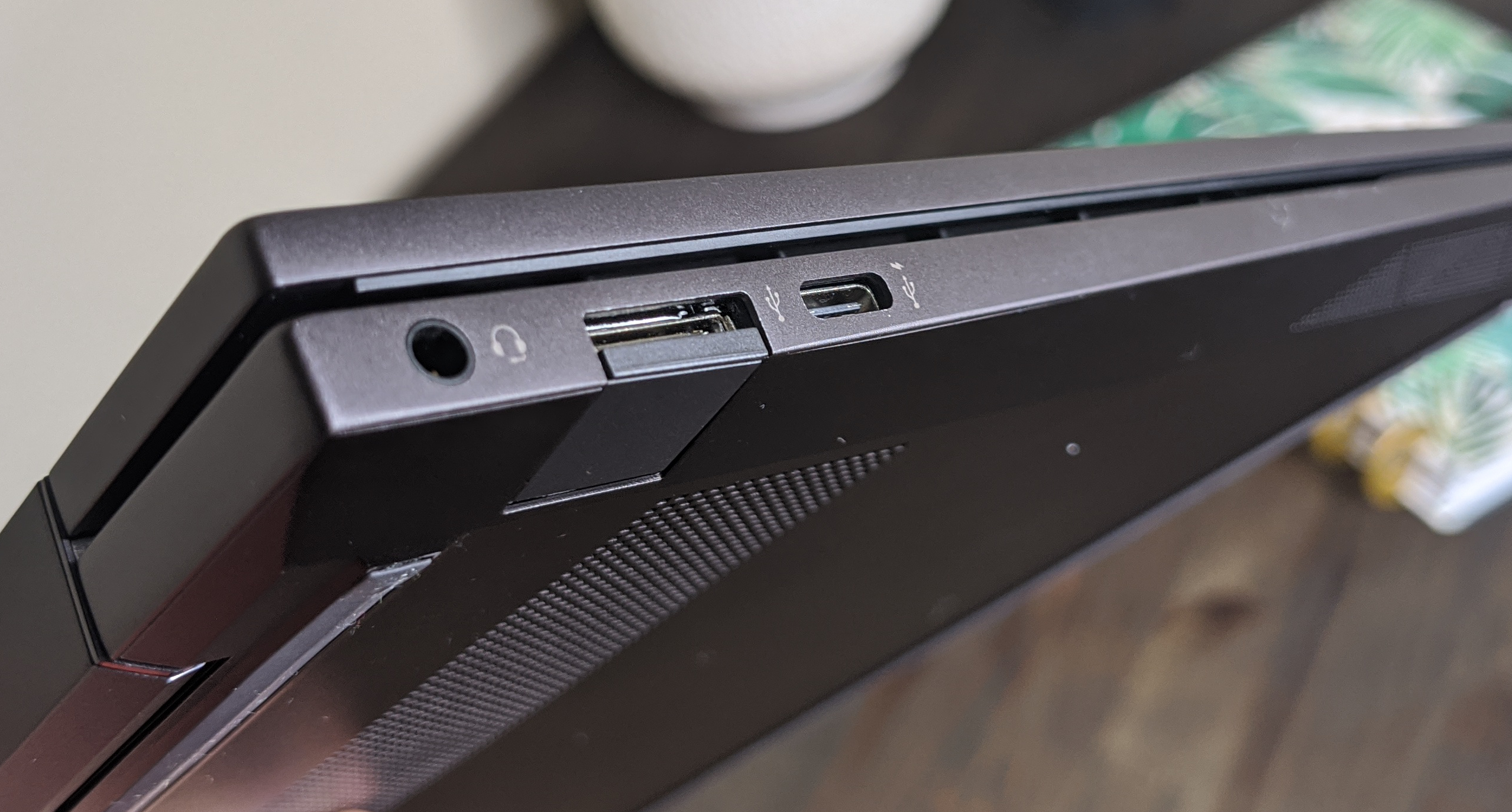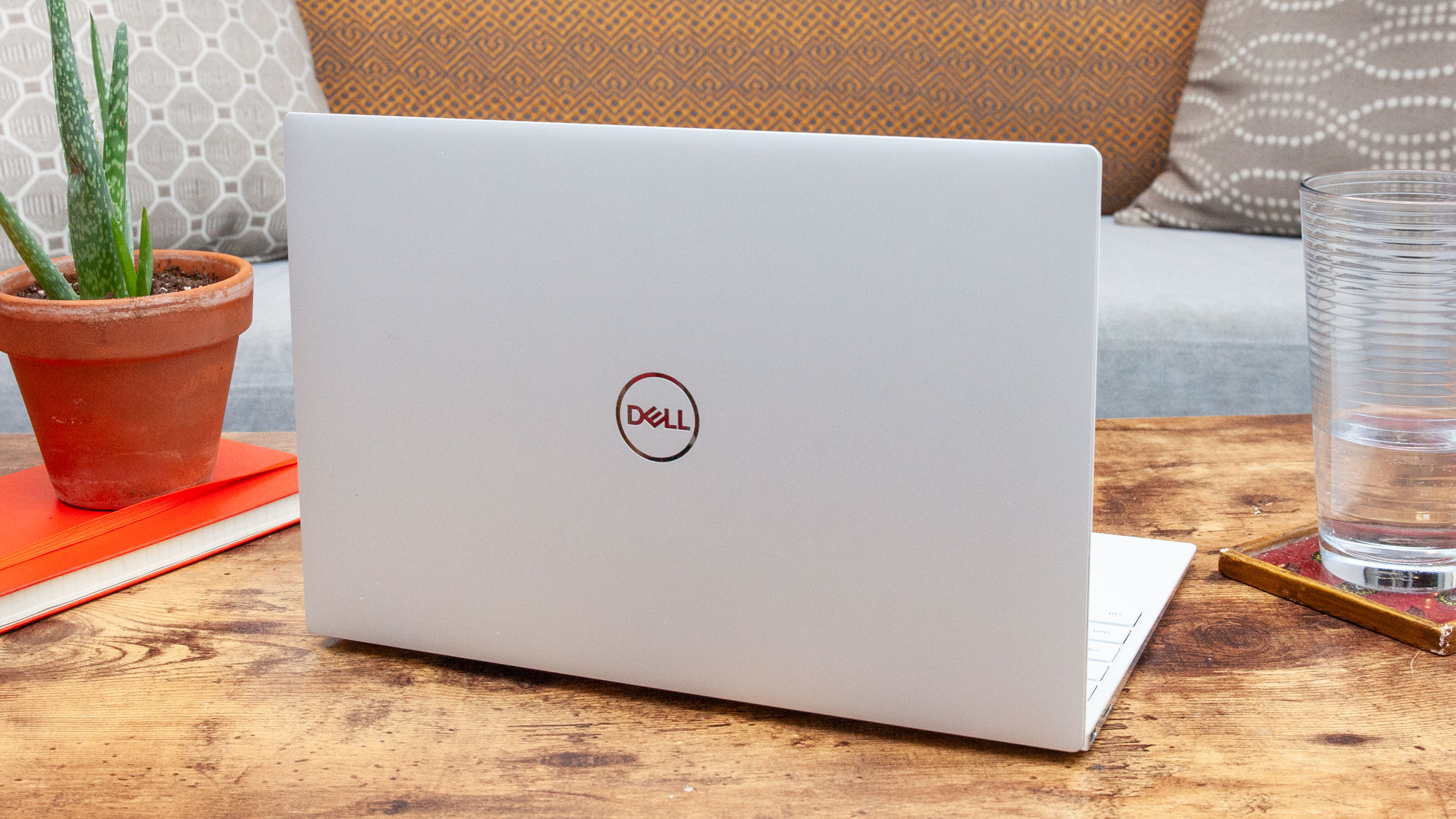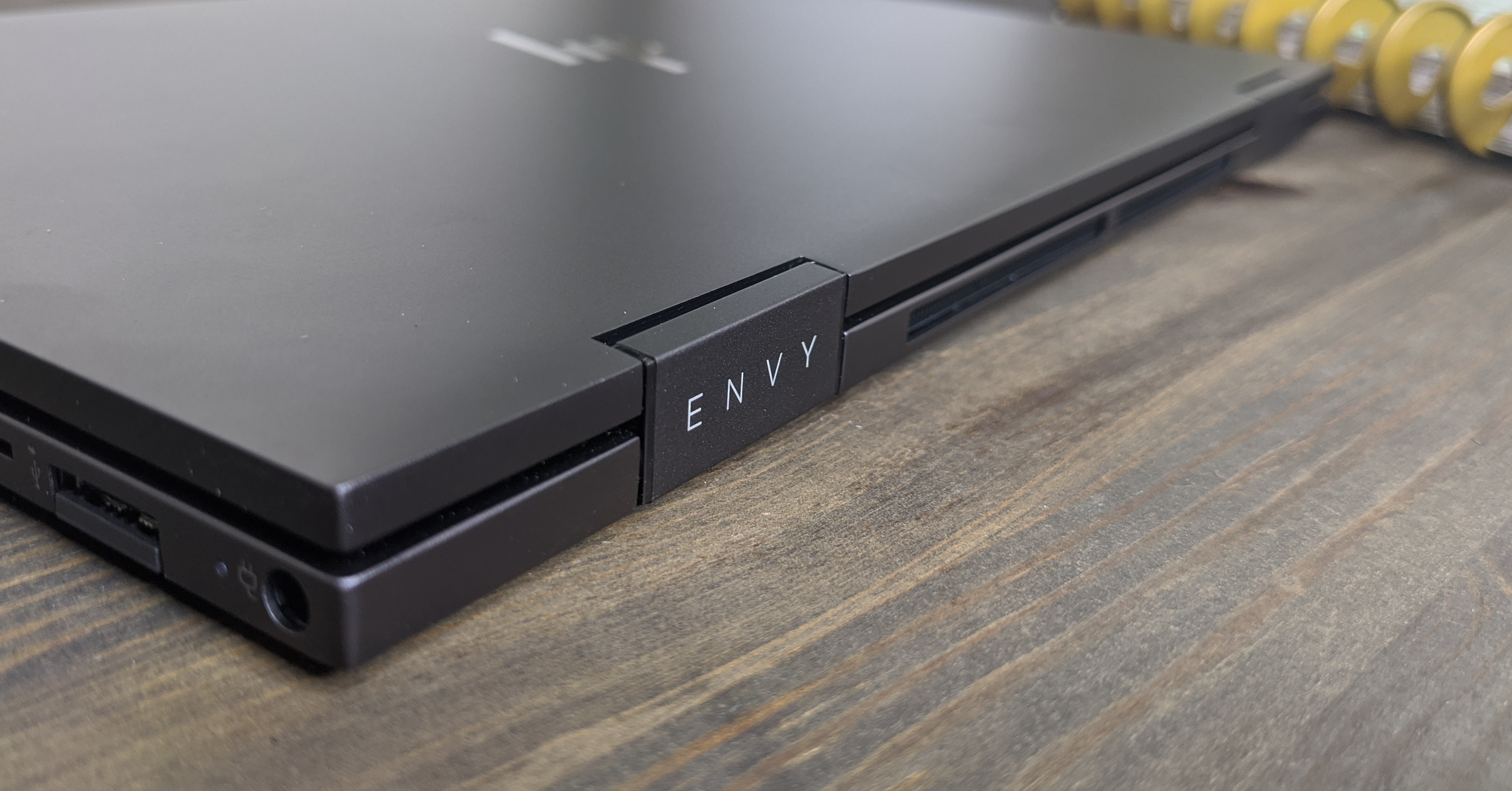HP Envy x360 vs. Dell XPS 13: Which laptop is best?
Can a value pick bring down a flagship superstar?

I never expected to do a face-off between the HP Envy x360 13 and Dell XPS 13. Sure, they both have 13-inch displays and fancy aluminum chassis, but we usually do comparisons between two similarly-priced devices. So why am I putting an $800 laptop up against a $1,749 model? Blame AMD. The new Ryzen 4000 CPUs in the Envy 13 outperforms equivalent 10th Gen Intel chips and can be found in affordable midrange laptops, not only premium machines.
AMD doesn't deserve all the credit; In the Envy x360, HP crafted a marvelous machine capable of going toe-to-toe with much pricier notebooks. And here we are. My experience with the Envy x360 13 was so positive that I'm reaching straight for the top of our best laptops ranking where the XPS 13 is perched.
Hide their respective prices and you might think the XPS 13 and Envy x360 are competing in the same league. They both have portable aluminum chassis, great 13-inch displays and fast performance. Furthermore, if battery life is a major concern, the Envy x360 and XPS 13 will stay powered throughout a full workday. So as you can see, the Envy x360 and XPS 13 share many of the same qualities, and yet, the XPS costs a good deal more.
So why is the Dell laptop so much more expensive? Read on for a detailed comparison between these two laptops, and advice on which one you should buy.
Envy x360 13 vs XPS 13: Specs compared
| Row 0 - Cell 0 | Envy x360 13 | XPS 13 |
| Price | $799 | $1,749 |
| Display | 13.3-inch, 1080p | 13.4-inch, 1080p |
| CPU | AMD Ryzen 5 4500U | Intel Core i7-1065G7 |
| GPU | AMD Radeon Graphics | Intel Iris Plus |
| RAM | 8GB | 16GB |
| Storage | 256GB | 512GB M.2 NVMe SSD |
| Ports | 2 USB 3.1 Type-A, USB-C, microSD, headphone | 2 Thunderbolt 3, microSD card, headphone |
| Battery | 11:52 (old Edge); 10:45 (new Edge) | 12:39 |
| Dimensions | 12.1 x 7.7 x 0.7 inches | 11.6 x 7.8 x 0.6 inches |
| Weight | 2.9 pounds | 2.8 pounds |
Value and configurations
What makes this such a unique face-off is that we're comparing a mainstream laptop (Envy x360) to a premium device (XPS 13).
The reason? We named the Envy x360 13 the best sub-$1,000 laptop on the market, and an alternative to much pricier notebooks.
So, how affordable is it? The Envy x360 13 starts at $649 and comes with an AMD Ryzen 3 4300U CPU, 8GB of RAM and a 256GB SSD. Our $799 review unit has a Ryzen 5 4500U CPU, 8GB of RAM and a 256GB SSD.
Sign up to receive The Snapshot, a free special dispatch from Laptop Mag, in your inbox.
On the high end, you can spend $1,049 for a unit with a Ryzen 7 4700U CPU, 16GB of RAM and a 512GB SSD.
The new XPS 13 is a premium laptop through and through. It starts at $999 but the base model only has an Intel Core i3-1005G1 CPU, 8GB of RAM and a 256GB SSD. We recommend spending another $50 for a Core i5 version.
Another $100 gets you a touchscreen while the pricier $1,349 config has a Core i7 CPU and 16GB of RAM. We tested a $1,749 model, which features a 1.5-GHz Intel Core i7-1065G7 CPU, 16GB of RAM and a 512GB M.2 NVMe SSD. A tricked-out XPS 13 costs $2,309 and gets you the Core i7 processor, 32GB of RAM, a 2TB SSD, Windows 10 Pro and a 4K touchscreen display.
Winner: Envy x360. It's no contest. The Envy x360 13 has a cheaper starting price and costs less than the XPS 13 when configured with similar specs.
Design
If I handed you the Envy x360 13 and asked how much you thought it costs, you'd probably overbid. No other sub-$1,000 laptop on the market feels as premium as the Envy. That's in large part due to its all-aluminum design, which gives the Envy a sturdy, substantial feel.
It's also plenty stylish. Thin bezels surrounding the screen and attractive accents and angles give the Envy a decidedly modern appearance. The stealthy Nightfall Black color on our review unit is a shade more interesting than black and a touch prettier than brown.

Design is a subjective subject, but one clear advantage the Envy x360 13 has over the XPS 13 is its ability to transform into a tablet. As a 2-in-1, you can flip the screen back to set the Envy into tent or tablet mode.
We've always held the XPS 13's design in high regard and the newest 2020 version takes things to the next level. By getting rid of the bottom chin, Dell has finally crafted a laptop with a truly edge-to-edge display. The effect is gorgeous, drawing your eyes in toward the 13.4-inch display.

Those trimmed-down bezels mean the XPS 13 has an even smaller footprint than before. At 11.6 x 7.8 x 0.6 inches and 2.8 pounds, the XPS is a tad lighter and smaller than the Envy x360 13 (12.1 x 7.7 x 0.7 inches, 2.9 pounds).
The silver-and-black version of the XPS 13 might not draw much attention, but the gorgeous Frost and Arctic White edition is stunning. It even adds a bit more pizazz compared with the Envy x360 thanks to the textured glass-fiber weave on the deck.
Winner: XPS 13. They're both beautiful and feel expensive but the XPS 13 has a more compact footprint and a truly edge-to-edge screen. If you need a 2-in-1 laptop, go with the Envy x360.
Ports
The lack of a Thunderbolt 3 port is an unfortunate shortcoming of the AMD-powered Envy x360 13, which has an otherwise decent selection of ports.

On the right side of the Envy x360 13 is a USB 3.1 Type-A port and a microSD card slot. On the opposite side are a second USB-A port, an USB Type-C input and a headphone/mic jack.

The XPS 13 has a pair of Thunderbolt 3 ports (one on each side) and not much else. There is a microSD card on the left side and a headphone jack on the opposite end.
Winner: Envy x360 13. Missing out on Thunderbolt 3 is a bummer but the two USB-A ports on the Envy are practical for a lot of people.
Display
You can't fault the displays on either of these laptops but the 13.4-inch, 1920 x 1200-pixel touchscreen on the XPS 13 has a slight edge in the color and brightness departments. I don't want to give you the wrong impression because the Envy x360 13's 13.3-inch, 1080p panel is also excellent, and punches way above its class.

According to our colorimeter, the XPS 13's screen covers 115% of the sRGB color gamut, making it a tad more vivid than the panel on the Envy x360 13 (108%). Both top the mainstream average of 96%.
The XPS 13 also gets brighter, hitting a maximum of 417 nits compared to the Envy x360's 364 nits. Again, both top the 318-nit average so you won't have problems viewing them in bright conditions.

It's also worth noting that the XPS 13 has a 16:10 aspect ratio, so it's a bit taller and more narrow than the Envy x360's traditional 16:9 screen.
Winner: Dell XPS 13. It's brighter and more colorful than the Envy x360 13's screen, although the HP also impresses.
Keyboard and touchpad
These two laptops defy the notion that the thinner the laptop, the worse the keyboard. Both use every inch of their decks to spread the keys from one edge to the next. As a result, even people with large fingers will find typing on the Envy x360 13 and XPS 13 to be comfortable.

They also have large, easy-to-tap keys that are properly spaced and backlit so you can type in dark environments. Key travel is limited given their size so an external mechanical keyboard might be worth buying if you type long reports for a living.

The touchpads on the Envy x360 13 and XPS 13 are almost identical in size. They both use Precision drivers so swipes and gestures are accurate and responsive.
Winner: Draw. The XPS 13 and Envy x360's keyboards are comfortable, all things considered. The typing experiences are similar and their touchpads are identical in size.
Performance
When it comes to performance, AMD has overtaken Intel as the leading mobile chipmaker. HP elected to use the new Ryzen 4000 chips in the Envy x360 13, and the laptop benefits from it in a huge way.
Our Envy x360 13 review unit, equipped with an AMD Ryzen 5 4500U CPU and 8GB of RAM, toppled or equaled the XPS 13 with an Intel Core i7-1065G7 and 16GB of RAM, in some of our benchmarking tests.

In the Geekbench 4.3 overall performance test, the Envy x360 13 hit a 19,064, edging out the XPS 13 (19,053) by a few points. The XPS 13 got back at the HP in the more demanding Geekbench 5 test, scoring a 4,648 compared to the HP's 4,617.
The Envy flexed its AMD muscles in our Handbrake test, converting a 4K video to 1080p resolution in 13 minutes and 44 seconds. The XPS 13 needed 15 minutes and 40 seconds to complete the same task.
The HP did a good job of hiding its low price until we clocked its 256GB m.2 PCIe NVMe SSD, which duplicated 4.97GB of multimedia data in 16 seconds for a rate of 318.1 MBps. The 512GB m.2 PCIe NVMe SSD in the XPS 13 is twice as fast, reaching a rate of 642.5 MBps in the same test.

Intel still has some catching up to do when it comes to graphics performance. That might happen when Tiger lake CPUs arrive later this year with Xe graphics. Until then, the AMD Radeon Graphics in the Envy x360 13 are more capable than the Intel UHD Graphics in the XPS 13.
- Intel Tiger Lake CPUs: Rumors, release date, specs, benchmarks and more
On our Dirt 3 benchmark, the Envy x360 played the racing game at a smooth 78 frames per second, accelerating past the 59-fps achieved by the XPS 13.
Winner: Draw. The Envy x360 and XPS 13 traded wins in our performance benchmarks with the HP winning on graphics and the Dell delivering faster SSD speeds.
Battery life
If these laptops were cars, you could go on a road trip without having to stop at a gas station. The XPS 13 edges out the Envy x360 when it comes to endurance, but this marathon ended in a photo finish.

The Dell lasted for 12 hours and 39 minutes on our battery test, which involves continuous web surfing over Wi-Fi at 150 nits. The Envy x360 put up its own impressive result of 11 hours and 52 minutes, but the screen went dark just before the XPS.
Winner: XPS 13. It's a close contest but the XPS lasts a bit longer on a charge.
Overall winner: Dell XPS 13

The XPS 13 wins by the slimmest of margins but this is ultimately a major victory for the Envy x360, which proved that it is the best laptop for under $1,000. But even when we factor in the Envy's affordable price, the XPS 13 pulled ahead thanks to its more modern design, better display and longer battery life.
| Header Cell - Column 0 | HP Envy x360 13 | Dell XPS 13 |
|---|---|---|
| Value (10) | 10 | 8 |
| Design (10) | 9 | 10 |
| Ports (10) | 8 | 7 |
| Display (15) | 12 | 14 |
| Keyboard/Touchpad (15) | 12 | 12 |
| Performance (20) | 18 | 18 |
| Battery Life (20) | 18 | 19 |
| Total | 87 | 88 |
When you look closely, you'll see that the XPS 13 only narrowly edged out the Envy x360 in each of these areas. This is a testament to the incredible value of the Envy x360, which offers a premium aluminum chassis, long battery life, outstanding performance and a good selection of ports, for just $800.
Our advice is simple. If you want the best 13-inch laptop around and you don't need a 2-in-1, get the XPS 13. If budget is a concern at all, go with the Envy x360 13, which is a premium notebook in every way but the price.
Phillip Tracy is the assistant managing editor at Laptop Mag where he reviews laptops, phones and other gadgets while covering the latest industry news. After graduating with a journalism degree from the University of Texas at Austin, Phillip became a tech reporter at the Daily Dot. There, he wrote reviews for a range of gadgets and covered everything from social media trends to cybersecurity. Prior to that, he wrote for RCR Wireless News covering 5G and IoT. When he's not tinkering with devices, you can find Phillip playing video games, reading, traveling or watching soccer.

